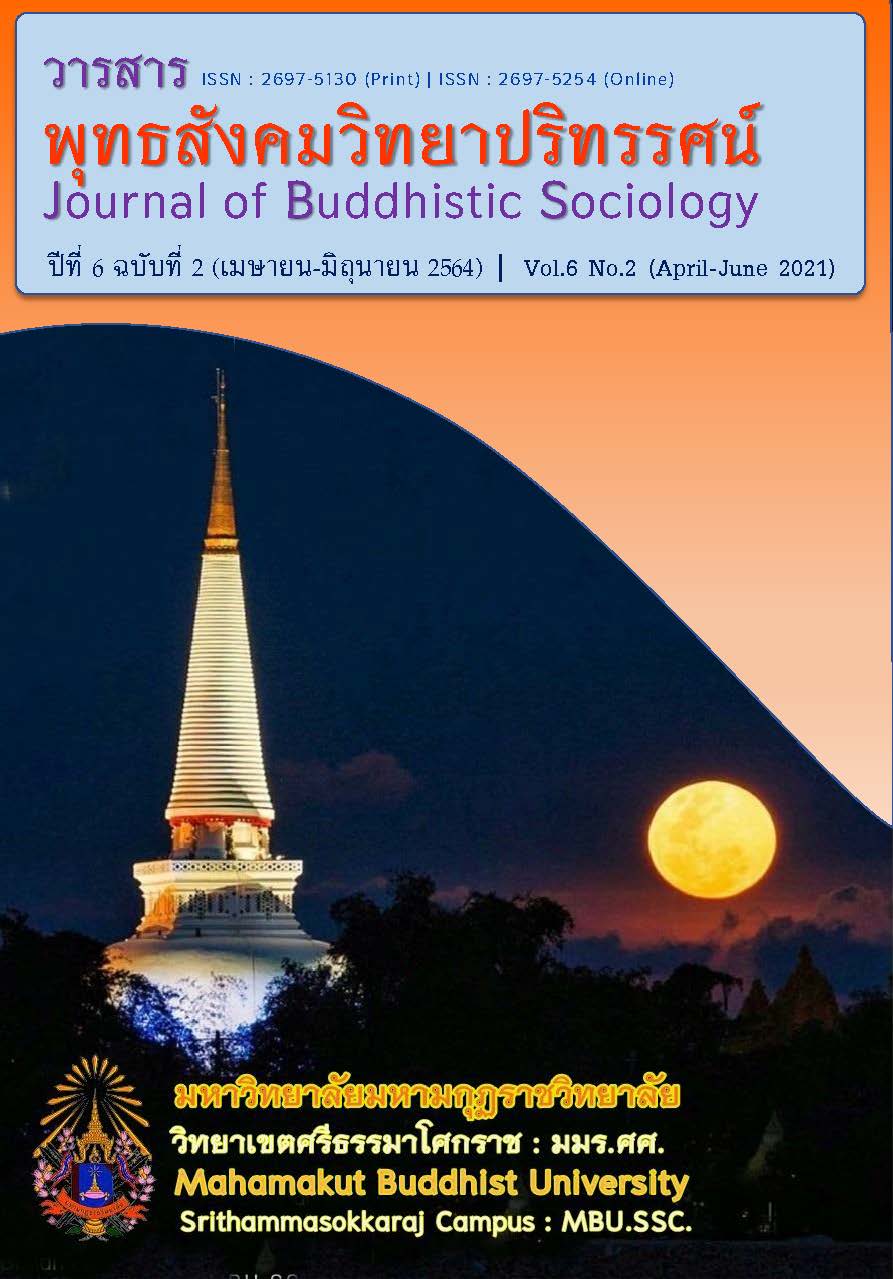A STRUCTURAL EQUATION MODEL OF CHARISMATIC LEADERSHIP FOR THE ADMINISTRATORS OF PHRAPARIYATTIDHAMMA SCHOOL IN GENERAL EDUCATION DEPARTMENT
Main Article Content
Abstract
The objectives of this research were: 1. to study the level and suitability of the variables of structural equation model of charismatic leadership for the administrators of Phrapariyattidhamma school in general education department
2. to study the harmony of structural equation model of charismatic leadership for the administrators of Phrapariyattidhamma school in general education department which was developed to be consistent with the empirical data. 3. to study the proportion of direct and indirect influences and the total influence of causal factors on charismatic leadership for the administrators of Phrapariyattidhamma school in general education department and 4. to study the suggestions and guidelines for charismatic leadership development for the administrators of Phrapariyattidhamma school in general education department. The study was mixed research. The semi-structured interview and questionnaire were used for data collection. The frequency, percentage, mean, standard deviation, skewness, kurtosis and influence path analysis were used for data analysis.
The research found that;
1. 71 variables of the structural equation model of charismatic leadership for the administrators of Phrapariyattidhamma school in general education department was appropriate at the high level.
2. the study result for the harmony of the structural equation model of charismatic leadership which was developed showed that it was consistent with empirical data.
3. the study result of the proportion of direct and indirect influences and the total influence of causal factors on charismatic leadership showed that the motivation factor had the direct influence at the highest level on charismatic leadership, followed by the creativity factor and total influence. The concept factor had the direct and total influences. The reliability proportion in the variables of charismatic leadership which was explained by casual factors was at 77% and 4. the study result of the suggestions and guidelines for charismatic leadership development for the administrators of Phrapariyattidhamma school in general education department showed that the models can be used for the practical purpose and improving the quality of school administration in order to maintain the standard.
Article Details
References
ธีระ รุญเจริญ. (2550). ความเป็นมืออาชีพในการจัดและบริหารการศึกษาในยุคปฏิรูปการศึกษา (พิมพ์ครั้งที่ 4). กรุงเทพมหานคร: ข้าวฟ่าง.
ปราณี ประวิชพราหมณ์ และคณะ. (2556). ปัจจัยที่ส่งผลต่อแรงจูงใจในการปฏิบัติงานของ คณาจารย์ บุคลากรคณะศิลปศาสตร์ มหาวิทยาลัยเทคโนโลยีราชมงคลพระนคร. ใน รายงานการวิจัย คณะศิลปศาสตร์. มหาวิทยาลัยเทคโนโลยีราชมงคลพระนคร.
พรสมบัติ ศรีไสย. (2555). โมเดลสมการโครงสร้างภาวะผู้นำเชิงศรัทธาบารมีของผู้บริหารสถานศึกษาขั้นพื้นฐาน. ใน วิทยานิพนธ์ปรัชญาดุษฎีบัณฑิต สาขาวิชาบริหารการศึกษา. มหาวิทยาลัยขอนแก่น.
สัมมา รธนิธย์. (2553). ภาวะผู้นำของผู้บริหาร (พิมพ์ครั้งที่ 2). กรุงเทพมหานคร: แอล.ที.เพรส.
สำนักงานพระพุทธศาสนาแห่งชาติ. (2560). ข้อมูลการจัดการศึกษาโรงเรียนพระปริยัติธรรม แผนกสามัญศึกษา พ.ศ. 2560 (พิมพ์ครั้งที่ 1). กรุงเทพมหานคร: สำนักงานพระพุทธศาสนาแห่งชาติ.
สุพานี สฤษฎ์วานิช. (2552). พฤติกรรมองค์การสมัยใหม่: แนวคิดและทฤษฎี. กรุงเทพมหานคร: สำนักพิมพ์มหาวิทยาลัยธรรมศาสตร์.
สุมนรัตน์ อัศตรกุล. (2557). รูปแบบภาวะผู้นำเชิงกลยุทธ์ตามภารกิจของผู้บริหารโรงเรียนมัธยม ศึกษาสู่การเป็นประชาคมอาเซียน. ใน ปริญญาศึกษาศาสตรดุษฎีบัณฑิต สาขาวิชาการบริหารการศึกษาและผู้นำการเปลี่ยนแปลง. มหาวิทยาลัยธุรกิจบัณฑิต.
Campbell, M.H. (2003). Introduction to educational administration. Boston Massachusetts: Allyn and Bacon.
Conger, J.A. and Kanungo, R.N. (1988). Charismatic Leadership: The Elusive Factor in OrganizationalEffectiveness. San Francisco: CA. Company.
DuBrin, A.J. (2010). Principles of Leadership (6 ed.). Boston: Nelson Education.


